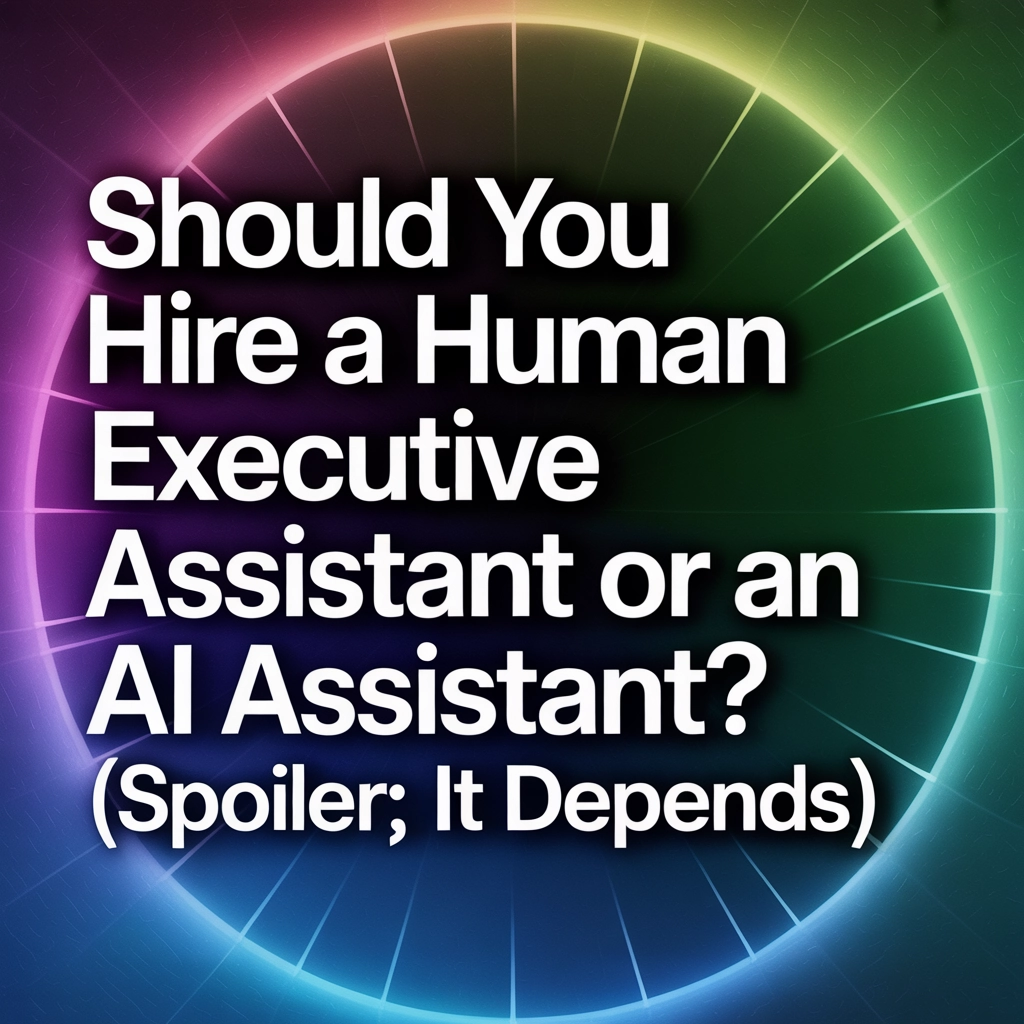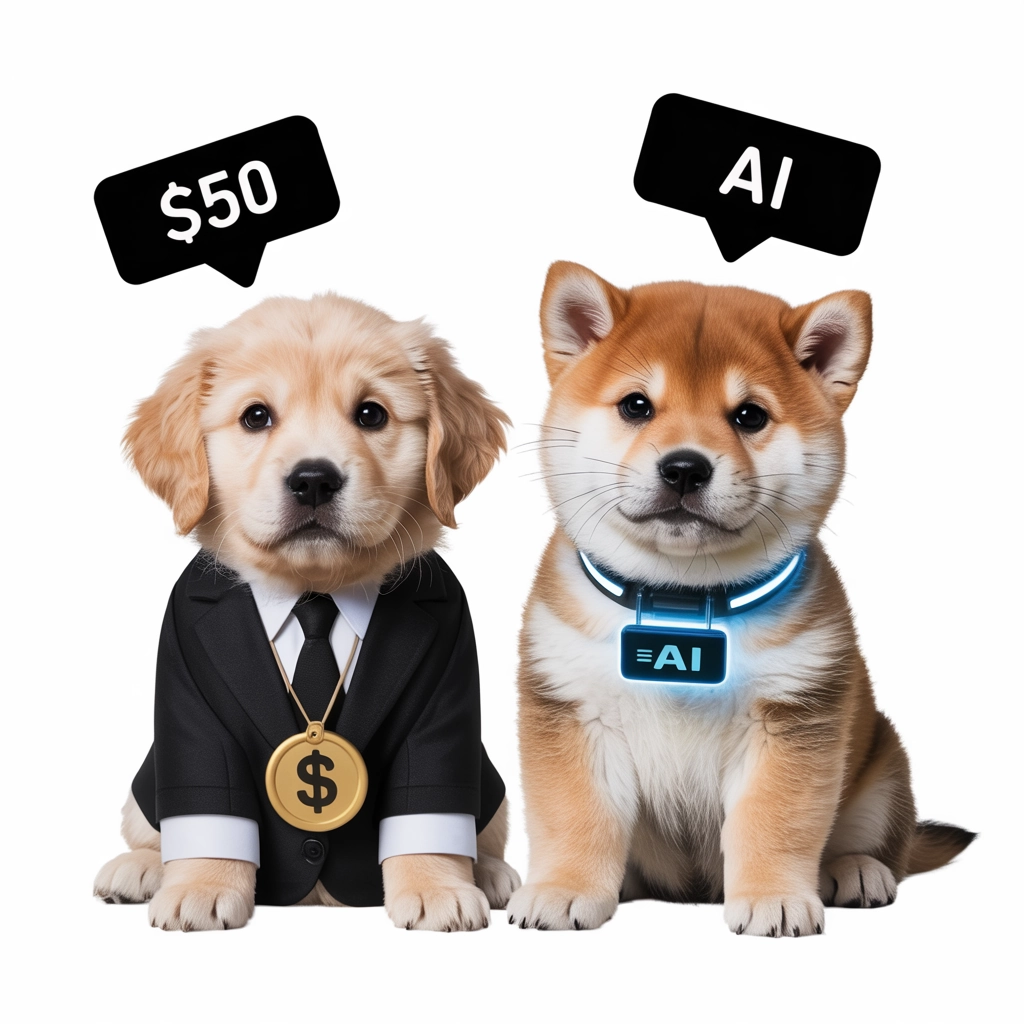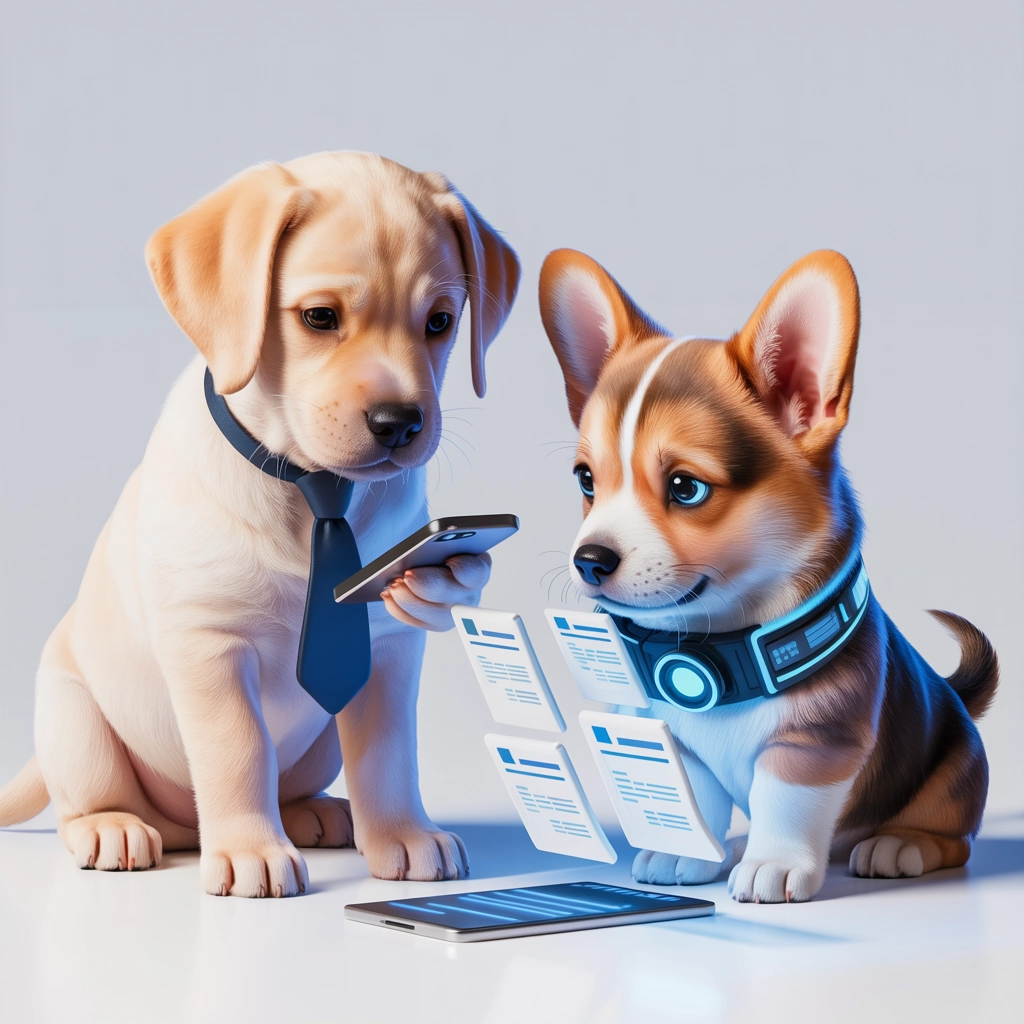Should You Hire a Human Executive Assistant or an AI Assistant? (Spoiler: It Depends)
The executive assistant dilemma of 2025: human touch vs AI efficiency. Learn when to choose each option and how to combine them for maximum impact.

 🐾
🐾Should You Hire a Human Executive Assistant or an AI Assistant? (Spoiler: It Depends)

The Executive Assistant Dilemma of 2025
The question of whether to hire a human executive assistant or invest in an AI assistant is increasingly common in today's business landscape. As the CEO of Tailforce, I've had countless conversations with business leaders wrestling with this exact dilemma.
The truth? It's not a simple either/or decision. The right choice depends entirely on your specific needs, work style, budget, and the nature of your business. But more importantly, the future of executive support isn't about choosing between humans OR AI—it's about understanding how they can work together.
Let's dig into the strengths and limitations of both options to help you make the right decision for your situation.
The Irreplaceable Human Touch
Human executive assistants bring unique capabilities that even the most advanced AI systems of 2025 struggle to replicate:
Emotional Intelligence and Relationship Building
Human assistants excel at reading between the lines, understanding unspoken needs, and building genuine relationships with clients, partners, and team members. They can sense when you're stressed and adjust their approach accordingly. They remember personal details about your contacts and use those insights to strengthen business relationships.
"The most valuable thing my executive assistant does isn't managing my calendar—it's how she handles difficult conversations with important stakeholders when I'm unavailable," shares a Fortune 500 CMO. "She knows exactly how to make people feel heard while protecting my time."
Complex Problem-Solving and Adaptability
When unexpected situations arise—as they inevitably do—human assistants can think creatively, make judgment calls, and adapt quickly to changing circumstances.
Consider scenarios like:
- A critical meeting location suddenly becomes unavailable
- A VIP client arrives with unexpected dietary restrictions
- Travel plans are disrupted by unforeseen weather events
Human assistants can navigate these situations with nuance and discretion, often resolving problems before you even become aware of them.

High-Stakes Confidentiality
While AI security continues to improve, many executives still prefer having sensitive matters handled by a trusted human. Executive assistants often manage confidential information about personnel issues, financial matters, or strategic initiatives that require absolute discretion.
Taking Initiative Beyond Instructions
Experienced executive assistants don't just follow instructions—they anticipate needs. They might proactively:
- Prepare materials for an upcoming board meeting
- Suggest schedule adjustments based on your energy levels
- Flag potential conflicts or opportunities in your business relationships
- Offer perspectives based on institutional knowledge
The AI Assistant Advantage
AI assistants like those we've developed at Tailforce bring their own set of impressive capabilities to the table:
24/7 Availability and Scalability
Unlike human assistants who need sleep and weekends off (the nerve!), AI assistants are available around the clock. This becomes particularly valuable for:
- Executives who work across multiple time zones
- Leaders who tend to work unconventional hours
- Teams that need consistent support during crunch periods
AI can also scale instantly to handle volume spikes—like managing hundreds of incoming messages after a product launch—without breaking a sweat.
Ruthless Efficiency with Routine Tasks
AI assistants absolutely shine when it comes to repetitive, rule-based tasks:
- Email sorting and prioritization
- Calendar management and scheduling
- Information gathering and summarization
- Document preparation and formatting
- Travel booking and logistics coordination
- Basic research and data collection
The productivity gains can be substantial—many of our clients at Tailforce report saving 15-20 hours per week on these tasks alone.
Consistent Performance Without Burnout
Human assistants, like all of us, have good days and bad days. They get sick, feel stressed, or become overwhelmed during busy periods. AI performance remains consistent regardless of workload, time of day, or how many tasks you've already requested.
Cost Considerations
The financial equation varies widely based on location, experience level, and scope of responsibilities:
- A full-time, experienced executive assistant in a major metropolitan area might cost $60,000-$120,000+ annually (plus benefits)
- A part-time human assistant might range from $25-$50+ per hour
- AI assistant subscriptions typically range from $50-$500 per month depending on capabilities
For many small businesses and startups, AI assistants provide executive-level support at a fraction of the cost of a full-time hire.

Where AI Still Falls Short
Despite rapid advancements, today's AI assistants still have significant limitations:
Nuanced Communication Challenges
While AI can draft emails and responses, it may miss subtle cues in communication that humans naturally detect. AI might not fully grasp:
- Power dynamics within organizations
- Cultural differences in communication styles
- The emotional state of the person you're communicating with
- The history and context of complex relationships
As Ozzy, our Executive Assistant AI, might tell you: "I can draft the perfect email, but I can't read the room during a tense negotiation."
Limited Improvisation in Novel Situations
AI works best in scenarios it has encountered before or has been explicitly programmed to handle. When truly novel situations arise, AI may struggle to improvise appropriate solutions without human guidance.
Missing the "Why" Behind the "What"
AI assistants can follow instructions impeccably, but they may miss the strategic purpose behind tasks. A human assistant might question a decision that seems inconsistent with your goals, while AI will simply execute what you've asked.
The Decision Framework: How to Choose
Rather than viewing this as a binary choice, consider these factors to determine the right support configuration for your needs:
Consider a Human Executive Assistant When:
- Your work involves high-stakes, sensitive negotiations
- You need someone who can represent you in person
- Building and maintaining relationships is central to your role
- You require strategic thought partnership
- You manage confidential matters that demand absolute discretion
- You need someone who can adapt quickly to unexpected situations
Consider an AI Assistant When:
- Your primary needs involve routine task management
- You work irregular hours or across multiple time zones
- Budget constraints make a full-time hire challenging
- You need to scale support up or down frequently
- You're comfortable with technology and digital communication
- Most of your work involves digital documents and information
The Hybrid Approach: The Best of Both Worlds
For many executives, the optimal solution isn't choosing between human OR AI—it's leveraging both in a complementary relationship.
In this model:
- AI handles routine, repetitive tasks that don't require emotional intelligence
- Human assistants focus on high-value, relationship-based work
- The human assistant becomes more effective by delegating appropriate tasks to AI
"My executive assistant now manages our AI tools," explains a tech company CEO. "She's 40% more productive because the AI handles her routine tasks, allowing her to focus on the strategic work that makes her truly valuable to our organization."

At Tailforce, we've developed our AI assistants specifically to augment human capabilities rather than replace them. Our team of specialized AI personas works alongside human team members, handling everything from email management to content creation while leaving uniquely human tasks to... well, humans.
Looking Ahead: The Future of Executive Support
As AI capabilities continue to evolve, the line between human and AI assistants will continue to blur. We're already seeing this with our more advanced personas like Flint and Spark, who can handle increasingly complex tasks.
The most forward-thinking organizations are already creating integrated support systems where humans and AI collaborate seamlessly. This isn't just about efficiency—it's about creating a more humane workplace where technology handles the mundane so humans can focus on meaningful work.
The Bottom Line
The question isn't whether AI or human assistants are better—it's about determining the right mix for your specific situation. For some, that might mean starting with an AI assistant and adding human support as needs grow. For others, it might mean enhancing an existing human assistant's capabilities with AI tools.
What's your current executive support situation? Are you considering making a change? I'd love to hear about your experiences in the comments.
If you're curious about how AI assistants can fit into your workflow, you can register for a Tailforce account and see for yourself how our AI assistants can transform your productivity—whether they're working solo or alongside your human team.
Remember, the goal isn't replacing human connection—it's freeing up more time for it.
 🐾
🐾